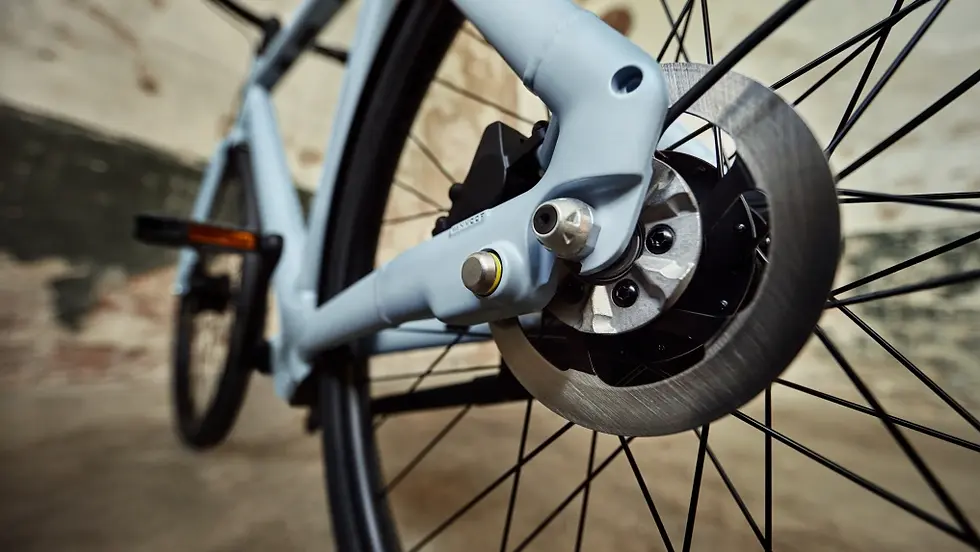Do proprietary parts have a place within the cycling industry?
- Adam Townsend

- Jul 31, 2023
- 3 min read
With the recent collapse of VanMoof Bicycles, once hailed as the "Tesla of the bike industry," many have been left wondering about the reasons behind their downfall. Among the major issues that have come under scrutiny is the company's heavy reliance on proprietary components. This diverges from the industry norm, as bicycle manufacturers typically use well-known Original Equipment Manufacturer (OEM) parts with extensive aftermarket offerings. The esiest way to understand how this impacts customers is when it comes to the ability to purchase replacement parts. Proprietary parts can only be sourced directly from the manufacturer, where as the OEM/aftermarket parts offerings stocked on most bicycles are readily available to purchase or order in at most online or physical retailers. Proprietary parts do not often adhere to existing standards so even if these parts were to be removed from a bicycle they could not then be replaced by an aftermarket offering as an alternative as this would simple not fit and ultimately not be compatible.
One of the primary benefits of using OEM parts is that the responsibility for warranties falls upon the component manufacturer rather than the bicycle brand itself. This setup can help offset warranty costs, leaving the bicycle manufacturer responsible only for the frame. Additionally, when failures occur, customers can have their bicycles repaired by any bicycle shop, giving them more flexibility and convenience. In contrast, proprietary parts may force customers to rely on authorized dealers or specialists for repairs, or even require shipping the bicycle back to the manufacturer. This was one of the critical points where VanMoof faced difficulties, becoming overwhelmed with service repairs and ultimately leaving their customers underserviced and unsatisfied.
Furthermore, the use of proprietary parts can impair consumer maintenance, as it often requires specialised tools to complete regular maintenance tasks or simple repairs. This lack of accessibility may lead to frustration for bicycle owners who prefer to perform their own maintenance, as they may struggle to find suitable tools or be forced to seek specialised assistance.

While the collapse of VanMoof Bicycles serves as a cautionary tale, it is essential to acknowledge that there are certain advantages to bicycle brands using their own proprietary parts. One of the most significant benefits is the potential for enhanced product differentiation and innovation. By developing proprietary components, a bicycle brand can create a unique selling proposition, setting themselves apart from competitors in the market. This exclusivity can attract customers seeking cutting-edge features and design elements not available in off-the-shelf OEM parts. Additionally, a proprietary ecosystem allows the brand to maintain full control over the quality and performance of their bicycles, ensuring that every aspect is optimized to work seamlessly together. In some cases, proprietary parts might even result in improved efficiency, aerodynamics, or overall performance, delivering a superior riding experience that loyal customers may appreciate. However, while there are clear advantages, bicycle brands must tread carefully to strike a balance between proprietary innovation and accessibility, taking into account the potential drawbacks that can arise.

When it comes to the sustainability aspect of using proprietary versus OEM parts in bicycle manufacturing, there are several factors to consider. Proprietary parts offer advantages such as greater control over the supply chain, potentially leading to more efficient resource usage and reduced waste. Manufacturers can design for longevity, creating durable bicycles that contribute to a smaller carbon footprint and decrease the need for replacements.
However, there are significant drawbacks to proprietary parts in terms of sustainability. Limited accessibility and availability of these components can make it challenging for customers to find replacements or get their bicycles serviced, potentially leading to premature disposal and contributing to e-waste.
In contrast, OEM parts foster a more open and collaborative ecosystem, promoting repairability and longevity through extensive aftermarket support. Embracing circular economy principles and encouraging compatibility within the industry can lead to a more sustainable cycling ecosystem while still allowing for innovative designs and exceptional customer experiences. Striking a balance between innovation and accessibility is crucial for bicycle brands to ensure they contribute positively to a more sustainable future.
The takeaway is clear: while proprietary parts may offer short-term advantages, they come with inherent risks and limitations. As customers become increasingly discerning and expect more flexibility in their ownership experience, manufacturers may find using well-established OEM parts that have a robust aftermarket support network to be the safest choice. By doing so, they can build stronger customer trust, ensure better serviceability, and avoid the pitfalls that may lead to the downfall of even the most promising brands. As the cycling industry continues to evolve, embracing open standards and readily available components will likely be the key to sustained success and customer satisfaction.





Comments